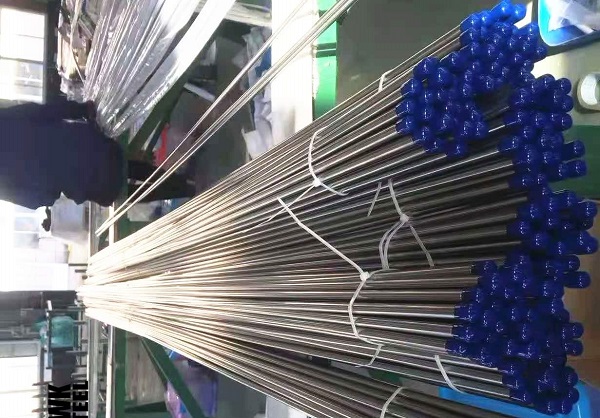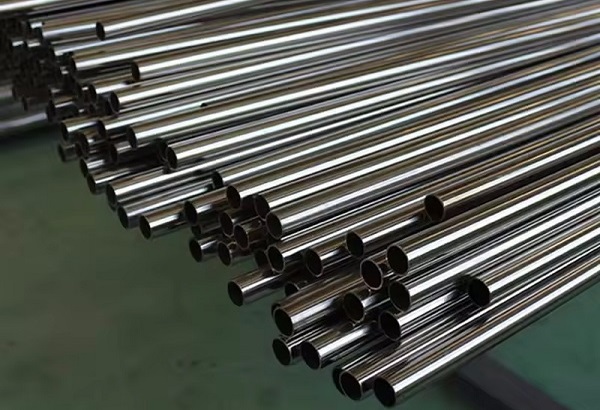Categories
- Technical & Application (25)
- Steel Tubing (20)
- Alloy Tubing (8)
In oil extraction, wellhead pressure monitoring is critical. Instrument tubing connects the pressure sensors in the oil well to ground-level control devices, measuring wellhead pressure and helping operators adjust production rates to prevent blowouts or pressure loss. The material used for instrument tubing in oil well pressure monitoring typically needs to withstand high pressure, corrosion, and maintain high strength, as oil wells often involve high temperatures, high pressures, and corrosive media (such as hydrogen sulfide-containing natural gas, saltwater, etc.). In deep well drilling, high-pressure systems at the wellhead require corrosion-resistant tubing made from specific materials, such as austenitic stainless steel or duplex stainless steel.

ASTM A269 dual-certified TP316/316L instrument tubes in straight length, supplied to Indonesia.
Instrument tubes used for wellhead pressure monitoring are generally made from 316/316L stainless steel, or duplex stainless steel 2205 and 2507. TP316 is one of the most commonly used materials for instrument tubing, known for its excellent corrosion resistance. It is particularly suitable for environments with chlorides, saltwater, and acidic gases. The TP316L variant has a lower carbon content, which helps prevent intergranular corrosion that can occur during welding, making it ideal for applications where welding is required. TP316/316L instrument tubes shall be made in accordance with ASTM A269 in seamless or welded type.

Duplex 2507 (ASTM A789 S32750) electropolished tubes, for oil wellhead equipment, supplied to Australia.
Instrument tubes made from duplex stainless steel 2205 (UNS S32205) offers higher strength and corrosion resistance compared to TP316/316L stainless steel, making it particularly suitable for oilfield environments containing chlorides, such as saline conditions. Its dual-phase structure, consisting of approximately 50% ferrite and 50% austenite, combines the better SCC resistance of ferrite with the toughness of austenite. The lower nickel content (4-6%) compared to austenitic steels reduces SCC sensitivity in chloride environments. High chromium (22-23%) and molybdenum (3-3.5%) levels enhance resistance to localized corrosion, while its higher yield strength and lower thermal expansion coefficient contribute to improved durability under high-stress conditions. Super duplex stainless steel 2507 (UNS S32750), an enhanced version of 2205, has higher chromium, molybdenum, and nitrogen content, which significantly enhances its resistance to pitting, crevice corrosion, and stress corrosion cracking, especially in highly corrosive environments with higher concentrations of chlorides. Instrument tubing made of duplex 2507 also has greater mechanical strength, allowing it to withstand higher pressures and temperatures, making it ideal for more extreme conditions, such as deep-sea or high-pressure oil and gas applications.